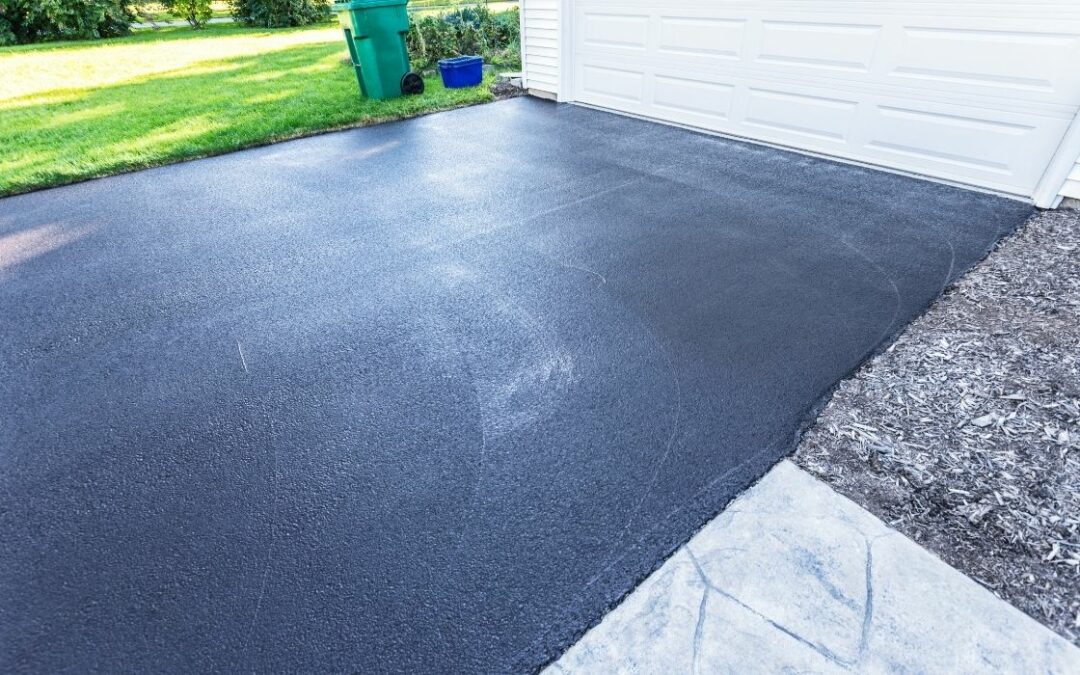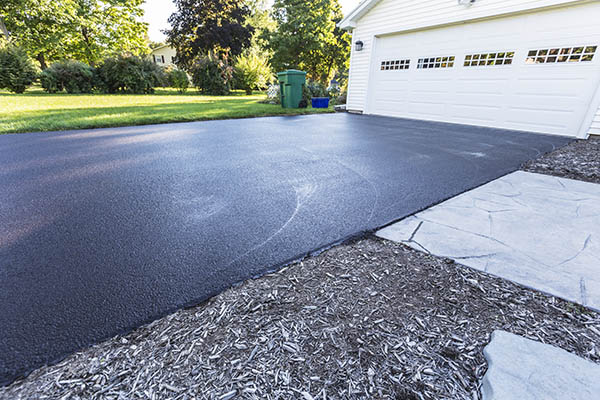Raise Safety and Allure: Angled Parking Area Solutions with Asphalt Sealing
Raise Safety and Allure: Angled Parking Area Solutions with Asphalt Sealing
Blog Article
Hot Mix Asphalt: A Sustainable Remedy for Pavement
Hot Mix Asphalt (HMA) has actually arised as a leading sustainable choice for pavement remedies, offering a myriad of ingenious technologies and environmental advantages. As the need for green construction techniques expands, exploring the subtleties of HMA's sustainability can supply useful insights right into the future of sidewalk solutions.
Ecological Advantages of Hot Mix Asphalt

Furthermore, Hot Mix Asphalt helps to alleviate urban heat island results. Its dark color absorbs sunshine, lowering the quantity of heat mirrored back right into the environment contrasted to lighter-colored sidewalks. This can reduce ambient temperatures in urban locations, reducing the demand for air conditioning and eventually reducing power consumption.
In enhancement, Warm Mix Asphalt adds to improved stormwater management. Its porous nature allows water to penetrate the pavement and reenergize groundwater supplies, decreasing drainage and the threat of flooding. These ecological benefits make Warm Mix Asphalt a lasting selection for paving roadways and freeways.
Energy Effectiveness in HMA Manufacturing
Is power efficiency an important variable in the production of Warm Mix Asphalt (HMA)? Energy plays a significant role in the manufacturing of HMA, affecting both expense and ecological sustainability. One vital facet of power effectiveness in HMA manufacturing is the usage of warm mix asphalt (WMA) innovations.
Furthermore, improvements in plant innovations have actually caused even more energy-efficient HMA manufacturing procedures. Modern plants are made with attributes like recycled asphalt sidewalk (RAP) handling capacities, reliable heater systems, and enhanced insulation, all contributing to energy savings. By maximizing energy usage in HMA production, the market can reduce its carbon footprint while keeping high-quality pavement materials. Power effectiveness is, as a result, a vital consideration in making certain the sustainability of Hot Mix Asphalt manufacturing.
Recyclability of Warm Mix Asphalt
The recyclability of Hot Mix Asphalt (HMA) is a critical element of its sustainability and lasting ecological effect. HMA is among one of the most recycled products in the United States, with over 100 million bunches of redeemed asphalt sidewalk (RAP) being reused every year in brand-new pavement building and construction. Reusing HMA supplies several environmental advantages, such as decreasing the requirement for virgin materials, decreasing energy intake during production, and decreasing the amount of waste sent out to landfills.
The procedure of recycling HMA includes milling the existing sidewalk, squashing it right into smaller sized items, and mixing it with new aggregate and asphalt binder to produce a recycled mix. On the whole, the recyclability of HMA plays a substantial function in promoting lasting practices within the pavement sector.

Long-Term Performance of HMA
Asphalt sidewalks show longevity and strength over a prolonged duration, mirroring the lasting efficiency of Warm Mix Asphalt (HMA) The long life of HMA can be attributed to its capacity to endure rush hour loads, extreme weather, and the effects of aging. Research studies have actually revealed that well-designed and appropriately created HMA pavements can last for 20 years or more with routine upkeep. The key to making best use of the long-term performance of HMA exists in utilizing premium materials, following best practices in construction, and applying effective upkeep techniques. Proper drainage, routine evaluations, and timely fixings are important for preserving the structural stability of HMA pavements gradually. In addition, innovations in HMA modern technology, such as the usage of polymer-modified binders and cozy mix asphalt, have actually additionally improved the longevity and longevity of HMA pavements. By prioritizing high quality building and construction and maintenance methods, HMA proceeds to show itself as a lasting and cost-effective service for durable pavement framework.

HMA: Longevity and Sustainability
Demonstrating both durability and sustainability, Warm Mix Asphalt (HMA) has ended up being a cornerstone in the building and construction of long-lasting sidewalk infrastructures - regrading. HMA's longevity stems from its capability to withstand heavy tons, click this link extreme weather problems, and high web traffic quantities, making it a trusted option for highways, highways, and flight terminal paths. The make-up of HMA, which normally includes aggregates, binder, and filler, plays an important role in boosting its longevity and resistance to put on and tear
Furthermore, HMA's sustainability depends on its recyclability and energy-efficient production procedure. The capacity to recycle redeemed asphalt sidewalk (RAP) in brand-new HMA mixtures decreases the need for virgin products and minimizes the ecological impact of pavement construction and upkeep. Additionally, the energy efficiency of generating HMA lies in its lower blending temperature levels contrasted to other pavement materials, resulting in lowered power intake and greenhouse Recommended Reading gas emissions.
Verdict
In conclusion, hot mix asphalt (HMA) offers a lasting option for sidewalk with its eco pleasant attributes. HMA's recyclability, energy efficiency in manufacturing, and long-lasting toughness make it an eco-friendly selection for roadway building. By conserving natural deposits, minimizing waste, and lowering greenhouse gas emissions, HMA plays a vital duty in promoting sustainability in framework advancement. Its ability to mitigate metropolitan warmth island impacts additionally highlights its significance in developing resilient and environmentally aware pavement systems.
HMA is one of the most recycled materials in the United States, with over 100 million heaps of reclaimed asphalt sidewalk (RAP) being reused annually in new sidewalk construction.The process of recycling HMA involves grating the existing pavement, squashing it right into smaller pieces, and blending it with new aggregate and asphalt binder to produce a recycled mix.Asphalt sidewalks demonstrate sturdiness and resilience over a prolonged duration, showing the long-lasting performance of Warm Mix Asphalt (HMA) In addition, innovations in HMA innovation, such as the navigate to this website usage of polymer-modified binders and warm mix asphalt, have actually even more improved the resilience and longevity of HMA sidewalks. The capacity to recycle reclaimed asphalt pavement (RAP) in new HMA mixtures decreases the demand for virgin products and decreases the environmental impact of pavement construction and maintenance.
Report this page